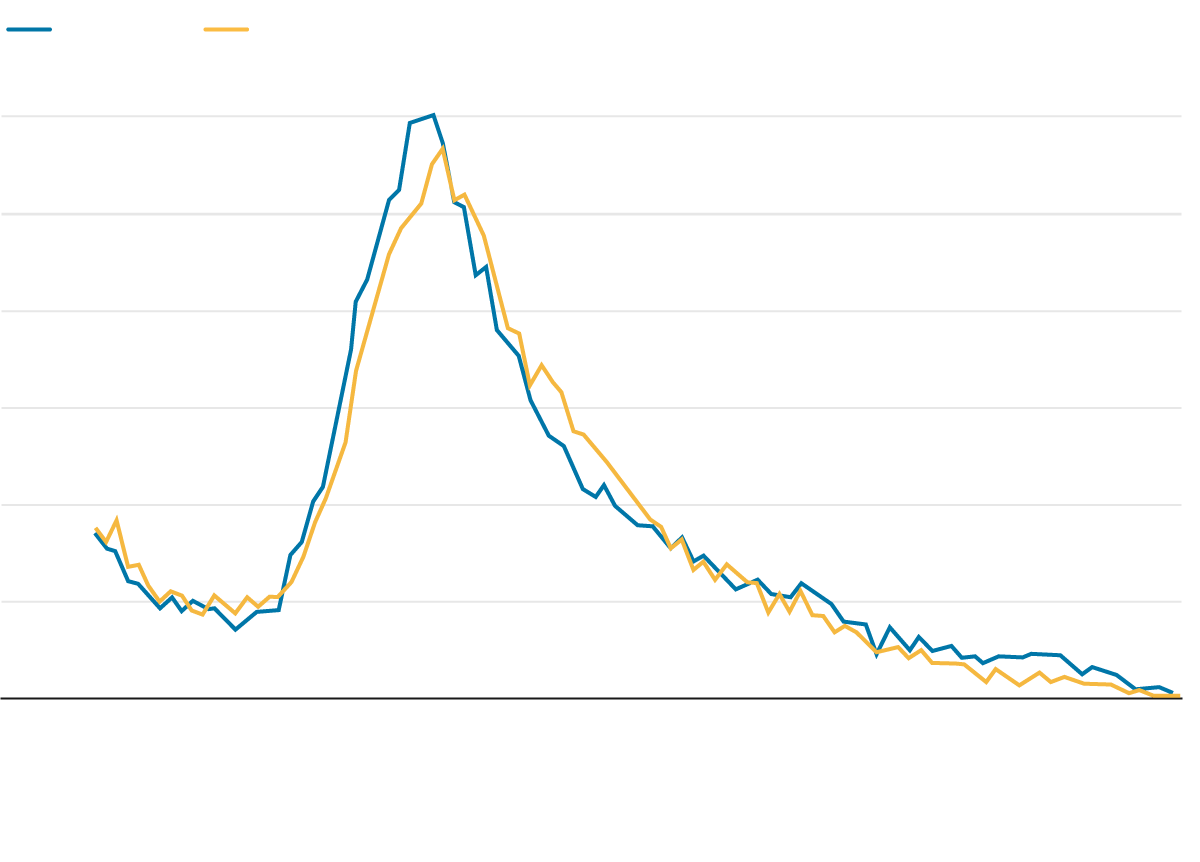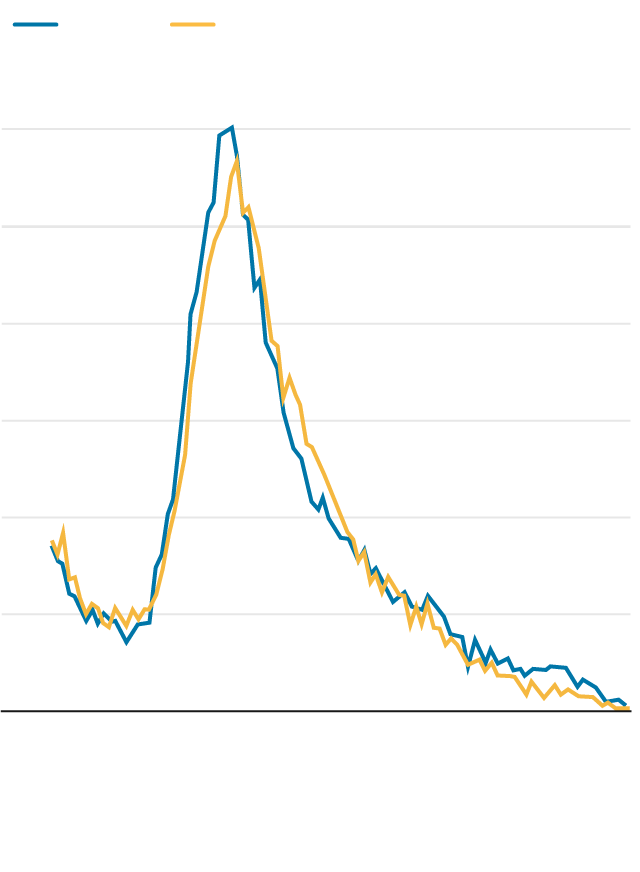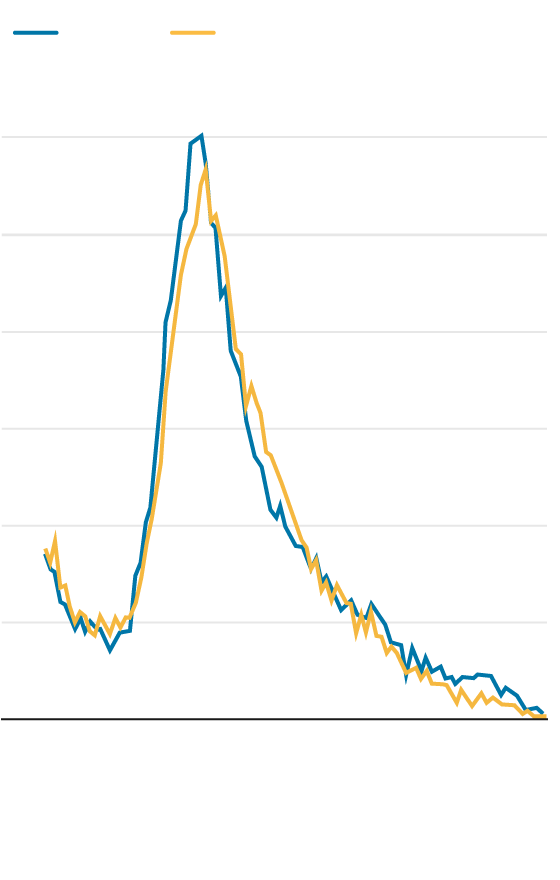Young families with small children are leaving Barcelona.
Immigration drives population growth and only 45% of residents were born in the city.

BarcelonaBarcelona has reached its highest population ever in the last forty years: 1,732,066 inhabitants. The Catalan capital has been experiencing unstoppable demographic growth driven by immigration for some time now, but its census picture hides profound transformations. The city is increasingly aging and suffering a worrying loss of its child population. Two indicators highlight this change. On the one hand, the increase in residents between 25 and 44 years old leaving Barcelona, who now account for half of the total number of emigrants. On the other hand, the percentage of children under 16 residing there has fallen to a historic low (11.9%). In other words, the Catalan capital has consolidated a pattern of emigration driven by young people and families with young children, who are moving abroad, primarily due to difficulties in accessing housing.
According to data from the Barcelona City Council's municipal register of residents for 2024, more than 67,300 Barcelona residents moved out of the city, 4.5% more than the previous year. Most of these emigrants have moved to other Catalan municipalities (67%), although a significant number have also tried their luck in another autonomous community and, finally, abroad. Specifically, the metropolitan area is the recipient of the majority of residents leaving the big city behind. L'Hospitalet de Llobregat is the most popular destination, followed by Badalona, Santa Coloma de Gramanet, Terraza, Sant Cugat del Vallés, Sabadell, Cornellà de Llobregat, and Sant Adrià de Besòs. In addition, a significant number also move to Madrid.
The motivations for settling in or leaving Barcelona vary with age and depend on many personal factors, such as financial or occupational situation, according to the report consulted by ARA. The fact that it is a capital experiencing economic expansion and an increasing supply in the labor market attracts residents from other municipalities or countries, but the challenges of living (due to the difficulty in accessing housing or the rising cost of living, among others) drive many of its residents away.
This report suggests that the loss is most acute among the young population, and consequently, there is a decrease in families with children living in Barcelona. Last year alone, there were more than 7,000 emigrations of children between 0 and 14 years old from the Catalan capital. And there is another fact that illustrates the loss of the child population: while almost a third of the city's homes are single-person, only one in five households (21.8%) are home to minors.
According to the Municipal Data Office, Barcelona is gaining new residents from other areas, but losing residents born in the city for the sixth consecutive year. While between 2000 and 2019, just over half of the population was born in the capital, this group currently represents only 45% of registered citizens. In fact, in 2023, the City Council predicted that "native Barcelona residents" had reached their lowest figure in the city's demographic makeup, when they represented 46.1%. Thus, the loss of relative importance of this group continues for another year.
46,000 new residents from abroad
The demographic shift in Barcelona is driven by the foreign population, which has been increasing in recent years. If the city continues to grow positively, it is precisely because of the arrival of people from other countries: throughout 2024, the Catalan capital gained 46,000 residents of other nationalities, and currently, up to a third of its residents were born abroad. Although there has been a slight decline in the growth rate compared to the previous year, the number of registered foreigners continues to rise, to the point that this indicator has multiplied by 17 in the last 30 years.
Most of the foreigners who have arrived in Barcelona come from Latin America—with Argentina, Colombia, and Venezuela leading the way—and from other European countries. By nationality, the most present is Italian (with 53,415 people), followed by Colombian (30,530), Pakistani (25,703), Chinese (23,511), and Peruvian (22,771). There are also six nationalities representing between 10,000 and 20,000 residents: Morocco, France, Honduras, Venezuela, Argentina, and Russia.
According to the municipal document, new residents due to immigration provide "a very balanced gender structure and a fairly young age structure." Furthermore, among last year's new arrivals, 45.2% declared having a university degree or education. The new wave of migration has had a direct impact on the social and cultural makeup of the city, with a notable increase in foreign nationals in neighborhoods such as Eixample, Sant Martí, and Ciutat Vella. In the latter case, more than half of the residents were born in other countries.
It should be noted that the data in the report is extracted from the additions (by birth, immigration, or administrative registration) and deletions (by death, emigration, or administrative deletion) of the municipal register, so there may be residents in the city who are not registered or who are still on the register.
Free fall in births
For yet another year, Barcelona has recorded a negative natural balance (births minus deaths). The 11,091 births recorded in 2024 mark the lowest value since 1900, with the exception of 1939, marked by the end of the Spanish Civil War. Thus, the number of children per woman continues to plummet, and year after year this rate moves away from the symbolic threshold of 1. Currently, it stands at 0.88 children per woman.
The negative natural balance is spread across all of the city's districts with the exception of Ciutat Vella, where for the second consecutive year there are more births than deaths. However, in Barcelona as a whole, the population is increasingly aging. The report finds that for every child under 16 living in Barcelona, there are practically two adults aged 65 or older. At this point, the representation of minors in the total number of Barcelona residents (11.9%) has reached its lowest figure since records began, while the percentage of older population has risen to 20.8%.
"The population continues to age, but has stabilized at an average age of 44," explains María Jesús Calvo, head of the Statistics and Data Dissemination Department at Barcelona City Council. In the Catalan capital, one in five people is 65 or older, and a new record of centenarians, with 1,104 residents over 100 years old, 9.6% more than in 2023.
-
Third consecutive year of growth
Barcelona has seen three consecutive years of unchecked population growth, regardless of district. By January 1, 2025, there will be nearly 30,000 more residents than in 2023, and 65,000 more than in 2020, before the COVID-19 pandemic. According to the City Council, this is the "highest" level of registered residents since 1986.
-
Three neighborhoods do not gain population
Regarding demographic movements by neighborhood, almost all have gained residents. There are three exceptions: Tres Torres (Sarrià-Sant Gervasi), the Poblenou Olympic Village (Sant Martí), and Can Peguera (Nou Barris). However, in all these cases, the population decline is less than 0.5%.
-
The new ones choose the Marina del Prat Rojo
The neighborhood featured in the report is Marina del Prat Vermell (Sants-Montjuïc), with a 45.5% population increase, where the ongoing construction of new homes is attracting new residents. The less populated neighborhood, La Clota (Horta-Guinardó), is also growing, surpassing a thousand residents for the first time.
-
Alone or with another family model
Nearly a third of homes are single-person, but the average number of residents per dwelling has grown to 2.48 people. "There are registered residents who create different households within a single dwelling," the council explains. Homes inhabited by members of the same family have been declining.
-
Women have one or no children.
Fertility continues to decline, with slight differences depending on the mother's place of birth. While those born in Spain have 0.99 children per woman, the rate drops slightly, to 0.93, among those born in low- and middle-income countries, and falls to 0.51 for those born in high-income countries.
-
More than 180 nationalities
Up to 182 nationalities live together throughout the city, but there are certain territorial patterns. For example, Horta-Guinardó, Nou Barris, and Sant Andreu are home to a large American population, while Sarrià-Sant Gervasi, Gràcia, and the Eixample district are home to more Europeans, and Ciutat Vella is home to Asians.



